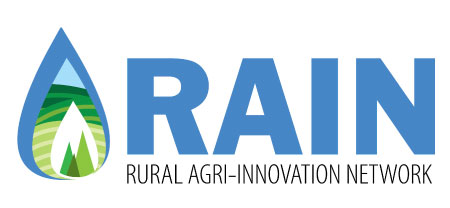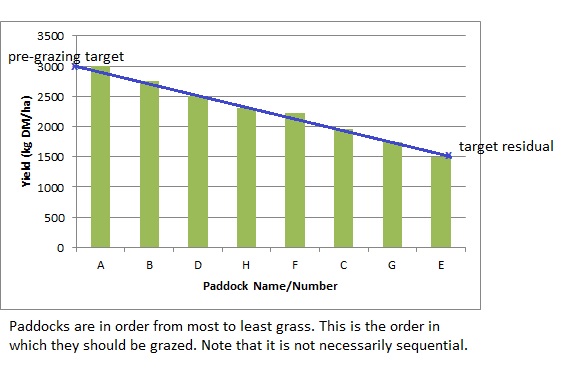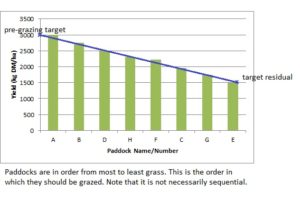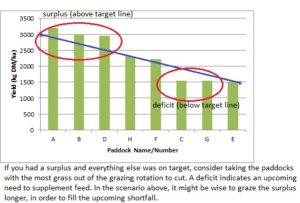by Christine O’Reilly, RAIN Research Technician
If you’re rotationally grazing but you’re not measuring your pasture, you aren’t managing your grazing: you’re just moving livestock around.
Think of measuring your pasture like keeping an inventory of the feed available on your farm: it is a real-time assessment of your pasture’s ability to feed your stock. Most animals eat a percentage of their body weight in dry matter (DM) daily, so it is easy to figure out how much feed your herd needs per day. Measuring your pasture only takes 30 – 60 minutes a week and can have a huge impact on your bottom line. It allows you to plan to prevent over- or under-grazing and to optimize the amount of stored forage (hay, silage) you produce. I would argue that by not measuring, it’s all guesswork; there is no plan and management decisions are being made without data that is easy to get and use.
Different tools exist to measure forage yield, and their benefits and drawbacks are summarized in Table 1. Once you have selected a measuring tool, pick a day that works for you and walk your pastures once a week. On your weekly pasture walk, take several measurements in each paddock and average them to get a DM yield for each paddock. These should be in either kg/ha or lbs/ac. To turn these numbers into useful information, make a bar graph, ordering the paddocks from highest to lowest yield. This graph is called a grazing wedge because of its shape.
Click on table to enlarge
To assess your feed inventory, you will also need to have some targets for your grazing rotation. It is generally recommended to remove animals from a paddock once it is grazed down to 1 500 kg DM/ha (1340 lbs DM/ac) so that the grass still has enough energy to recover quickly. Typically graziers put stock into a paddock when there is between 2 500 and 3 500 kg DM/ha (2 230 and 3 120 lbs DM/ac) available so that the grass does not become too mature. Put an “x” on your grazing wedge at your target yield for fresh grazing beside your highest yielding paddock, and put another “x” on the wedge for your target residual next to your lowest yielding paddock. Draw a line between the two, and you can see how your grass reality matches with your grazing demands (Figure 1).
Click on graph to enlarge
If most of your paddock yields fall against the line all the way across your wedge, then there should be enough grass available to feed your stock and meet your targets for the next week. If there are paddocks yielding above the target line, you have excess grass and may want to consider taking those paddocks out of rotation and cutting them for hay or silage. If the yields are below the target line, there’s a deficit on the way, and you may have to supplement some feed to your livestock until the grass growth picks up again (Figure 2). By comparing grazing wedges week-on-week, you can also figure out the average rate the grass grew the previous week. Over time, this information will allow you to predict how your inventory will change based on previous years’ data.
Click on graph to enlarge
There is a lot of good information on how to create and use a grazing wedge online. Most of it comes from New Zealand, Ireland, and the United Kingdom, so be aware that almost all of their pastures are ryegrass/clover mixtures, which affects the calibration of their measurement tools. Also, the Irish don’t usually report the total dry matter in the field; they subtract the first 1 500 kg/ha because that is their target residual. Since the cows shouldn’t eat it anyway, in Ireland it doesn’t count!
The Rural Agri-Innovation Network (RAIN) is in the final year of a three year pasture improvement project. This year the research team will be using a falling plate meter and a grazing wedge to assess pasture yield and inform rotation decisions. This project was funded in part through Growing Forward 2 (GF2), a federal-provincial-territorial initiative. The Agricultural Adaptation Council assists in the delivery of GF2 in Ontario.
I really believe there is truth in the saying “you can’t manage what you don’t measure”. Measuring your pasture throughout the growing season enables pasture management that is proactive, not reactive, and allows farmers and ranchers to maximize the productivity of their grazed forages.




